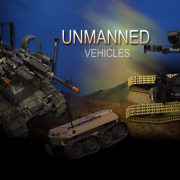CTS and CES 2018: Automotive Tech Innovators Ready to Wow in Las Vegas
In just a few days, Las Vegas will be buzzing with tech innovators from not only the world’s top electronics companies, but also dozens of automakers and firms working on connected and automated driving systems.
It all starts with the 2018 Consumer Telematics Show (CTS), which takes place Monday, Jan. 8 at the Rio All-Suite Hotel and Casino.
2018 Consumer Telematics Show (CTS)
CTS aims to bring together power players from automakers and technology companies that are working on connected and autonomous driving systems. Attendees can listen to presentations and forums with top executives and engineers from big-name companies, and have the chance to network.
The long list of companies confirmed to attend and/or participate in this year’s event includes Volvo, Volkswagen, Jaguar Land Rover, NVIDIA, AT&T, Fiat Chrysler Automobiles, Bose, BMW, Denso, Honda, Ford Motors, Mercedes-Benz, Lamborghini, Nissan, and many more.
See an up-to-date list of attendees on the CTS website here.
Highlights from this year’s list of speakers include:
- Volkswagen of America: Burkhard Huhnke, Senior VP of e-mobility
- Karma Automotive: Ken Stewart, Chief Business and Technology Officer
- Hyperloop One: Matt Jones, Senior VP of Software
- General Motors (GM): Kurt Hoppe, Global Head of Innovation - Connected Cars; and Nick Pudar, Director of Strategic Initiatives
- Mobileye: Uri Tamir, Senior Director of Strategic Initiatives
- Continental: Lars Shultheiss, Head of Sales & Portfolio, Business Unit Infotainment & Connectivity
- Audi: Brad Stertz, Director of Government Affairs
- IBM: Rajiv Phougat, Chief Technologist - Industry Solutions, AAD
Forums and presentations at this year’s event cover a wide array of relevant topics, including the automotive data revolution, next-generation user experiences, the coming reality of autonomous vehicles, connected vehicle cybersecurity concerns, cities and mobility, electric vehicles and more.
The full agenda and schedule for CTS 2018 is available here.
2018 Consumer Electronics Show (CES)
Later in the week, the 2018 International Consumer Electronics Show (CES) hits Las Vegas, from Jan. 9-12.
For roughly 50 years, CES has been drawing in technology enthusiasts and producers from all over the world. It is often the place where companies officially unveil their newest products and technologies, with flashy presentations. Many times they also show off lofty concepts that haven’t even been fully developed yet, in a bid to impress.
Two venues-the Venetian’s ballroom and the Monte Carlo’s Park Theater-will play host to a long list of keynote speakers this year, which will hail from companies like Intel, Ford Motor Co., the Huawei Consumer Business Group, Baidu, Qualcomm, Verizon, Comcast, Discovery Communications, YouTube, Hulu, and many more. See a full list of this year’s speakers, as well as videos from many of last year’s speeches, on the CES website here.
Though CES initially started out as an event mostly focused on the latest consumer gadgets, it has come to be quite the showcase for the latest in automotive innovation as well. Specifically, in the last decade, many automakers are choosing to show off the progress they are making toward connected and self-driving vehicles. In fact, it was named one of the 10 best automotive shows worldwide by USA Today recently.
This year, forums on topics such as “Autonomous Vehicles in the Cities of Tomorrow,” “The Future of Mobility and Autonomy” and “Cybersecurity and the Auto Industry” are scheduled to take place this year, with panelists from power players like Deloitte, Mobileye, General Motors, Renesas Electronics, Harman and Movement.ai are scheduled to take part.
Major media outlets like TechCrunch and The Verge predict that the automotive portion of this year’s show will be significant.
“Once again, a number of top car companies will be present, including Ford and Toyota. My guess is you’ll be seeing A LOT of self-driving car demo videos out of this year’s show,” TechCrunch said in an advance article.
“The auto industry is flush with [electric vehicle] and smart mobility startups these days. Tesla is still the most sound competitor to any of the big three automakers, but there’s a CVS receipt-sized list of others trying to fill the space between ‘tech company’ and ‘car company,'” said The Verge in their own preview article. “Many of them will be at CES showing off autonomous shuttles, self-driving technologies, electric scooters, and other futuristic transportation ideas — all things that companies like Ford (or Google, Intel, GM, you name it) are also working on in different capacities.”
In fact, The Verge reports that Byton, a Chinese automaker that has poached a lot of talent from Faraday Future, will be at CES showing off their first car — an all-electric SUV that it’s referring to as a “Smart Intuitive Vehicle.”
Get all the information you could ever need about 2018 CES on the official event page here.
Image: Toyota unveils a concept car at 2017 CES / Credit: CES Photo Gallery


